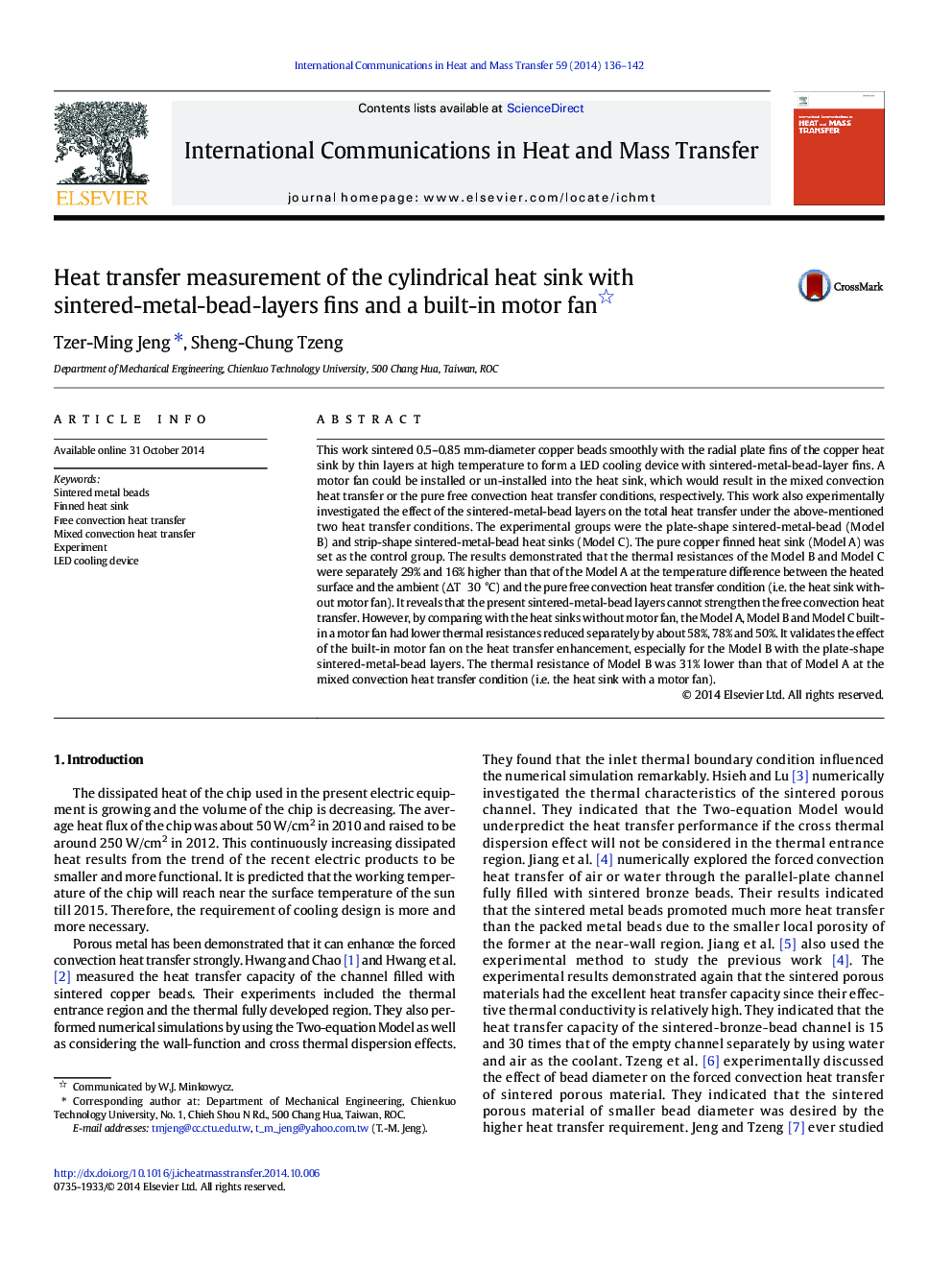| Article ID | Journal | Published Year | Pages | File Type |
|---|---|---|---|---|
| 653214 | International Communications in Heat and Mass Transfer | 2014 | 7 Pages |
Abstract
This work sintered 0.5-0.85 mm-diameter copper beads smoothly with the radial plate fins of the copper heat sink by thin layers at high temperature to form a LED cooling device with sintered-metal-bead-layer fins. A motor fan could be installed or un-installed into the heat sink, which would result in the mixed convection heat transfer or the pure free convection heat transfer conditions, respectively. This work also experimentally investigated the effect of the sintered-metal-bead layers on the total heat transfer under the above-mentioned two heat transfer conditions. The experimental groups were the plate-shape sintered-metal-bead (Model B) and strip-shape sintered-metal-bead heat sinks (Model C). The pure copper finned heat sink (Model A) was set as the control group. The results demonstrated that the thermal resistances of the Model B and Model C were separately 29% and 16% higher than that of the Model A at the temperature difference between the heated surface and the ambient (ÎT â 30 °C) and the pure free convection heat transfer condition (i.e. the heat sink without motor fan). It reveals that the present sintered-metal-bead layers cannot strengthen the free convection heat transfer. However, by comparing with the heat sinks without motor fan, the Model A, Model B and Model C built-in a motor fan had lower thermal resistances reduced separately by about 58%, 78% and 50%. It validates the effect of the built-in motor fan on the heat transfer enhancement, especially for the Model B with the plate-shape sintered-metal-bead layers. The thermal resistance of Model B was 31% lower than that of Model A at the mixed convection heat transfer condition (i.e. the heat sink with a motor fan).
Related Topics
Physical Sciences and Engineering
Chemical Engineering
Fluid Flow and Transfer Processes
Authors
Tzer-Ming Jeng, Sheng-Chung Tzeng,
